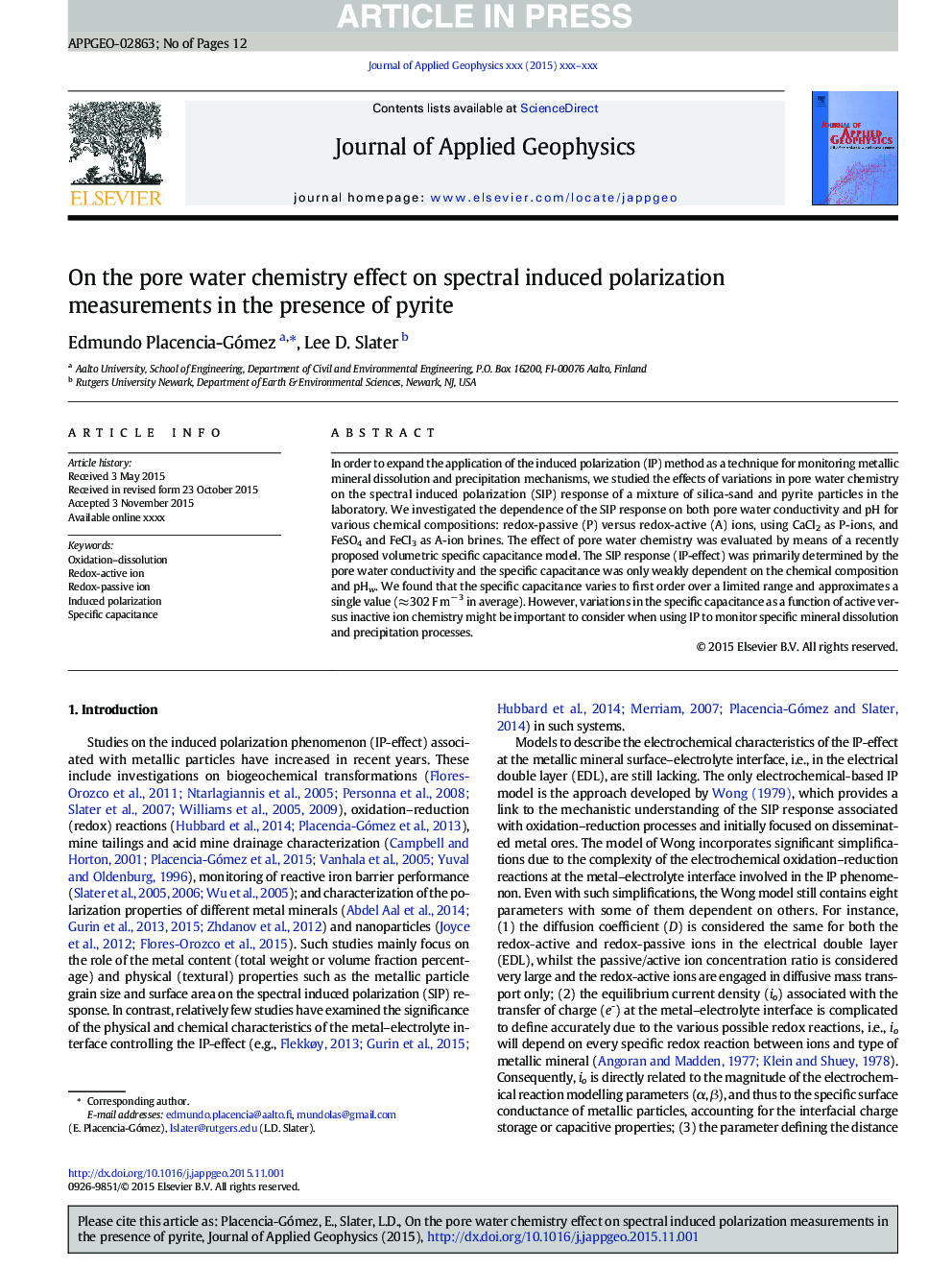| Article ID | Journal | Published Year | Pages | File Type |
|---|---|---|---|---|
| 8915640 | Journal of Applied Geophysics | 2016 | 12 Pages |
Abstract
In order to expand the application of the induced polarization (IP) method as a technique for monitoring metallic mineral dissolution and precipitation mechanisms, we studied the effects of variations in pore water chemistry on the spectral induced polarization (SIP) response of a mixture of silica-sand and pyrite particles in the laboratory. We investigated the dependence of the SIP response on both pore water conductivity and pH for various chemical compositions: redox-passive (P) versus redox-active (A) ions, using CaCl2 as P-ions, and FeSO4 and FeCl3 as A-ion brines. The effect of pore water chemistry was evaluated by means of a recently proposed volumetric specific capacitance model. The SIP response (IP-effect) was primarily determined by the pore water conductivity and the specific capacitance was only weakly dependent on the chemical composition and pHw. We found that the specific capacitance varies to first order over a limited range and approximates a single value (â 302 F mâ 3 in average). However, variations in the specific capacitance as a function of active versus inactive ion chemistry might be important to consider when using IP to monitor specific mineral dissolution and precipitation processes.
Related Topics
Physical Sciences and Engineering
Earth and Planetary Sciences
Geophysics
Authors
Edmundo Placencia-Gómez, Lee D. Slater,
